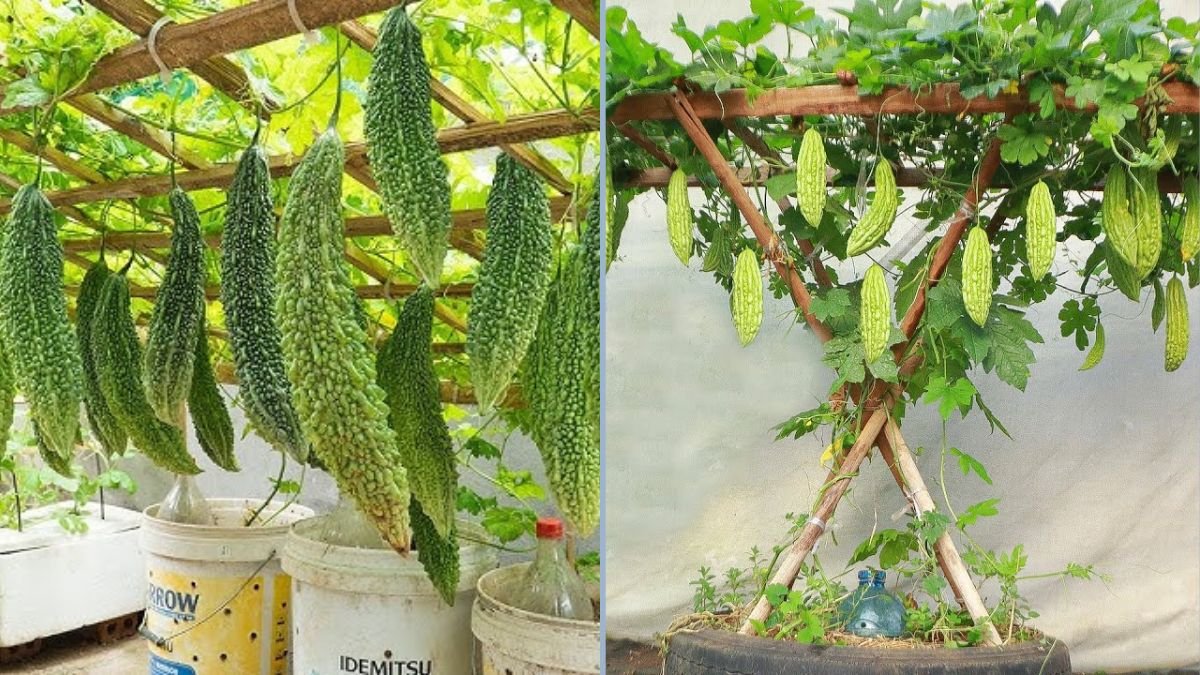Bitter melon, also known as bitter gourd or karela, is a highly nutritious and versatile vegetable widely used in Asian cuisines and traditional medicine. Known for its health benefits—including regulating blood sugar, boosting immunity, and aiding digestion—bitter melon is a favorite among health-conscious individuals. Growing this vegetable at home not only guarantees fresh and chemical-free produce but can also be done sustainably using household waste. This method not only minimizes waste but also maximizes productivity, allowing you to harvest more and larger fruits. In this blog, we will explore a step-by-step guide on growing bitter melon at home using waste.
Why Grow Bitter Melon at Home?
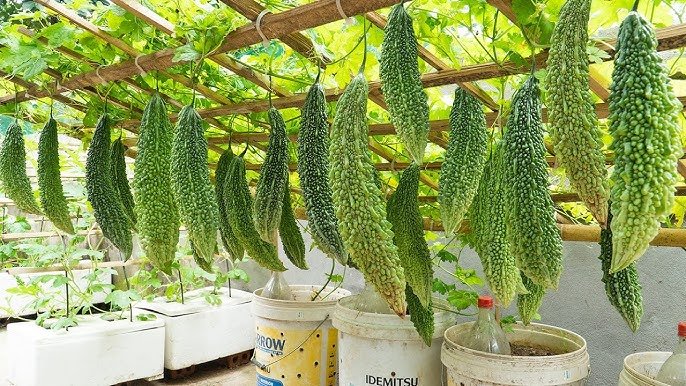
Home gardening comes with numerous benefits:
- Fresh and Nutritious Produce: Bitter melon straight from your garden is fresher and more nutrient-rich than store-bought ones.
- Cost-Effective: Growing your own vegetables reduces grocery bills.
- Eco-Friendly: Utilizing household waste as growing medium reduces landfill waste and promotes sustainability.
- Space-Saving: Bitter melon vines can be grown vertically, making them ideal for small spaces like balconies, terraces, or backyards.
- High Productivity: With proper care, bitter melon can produce multiple fruits per vine.
Growing bitter melon at home ensures control over fertilizers, pesticides, and water, giving you healthy, high-yielding plants.
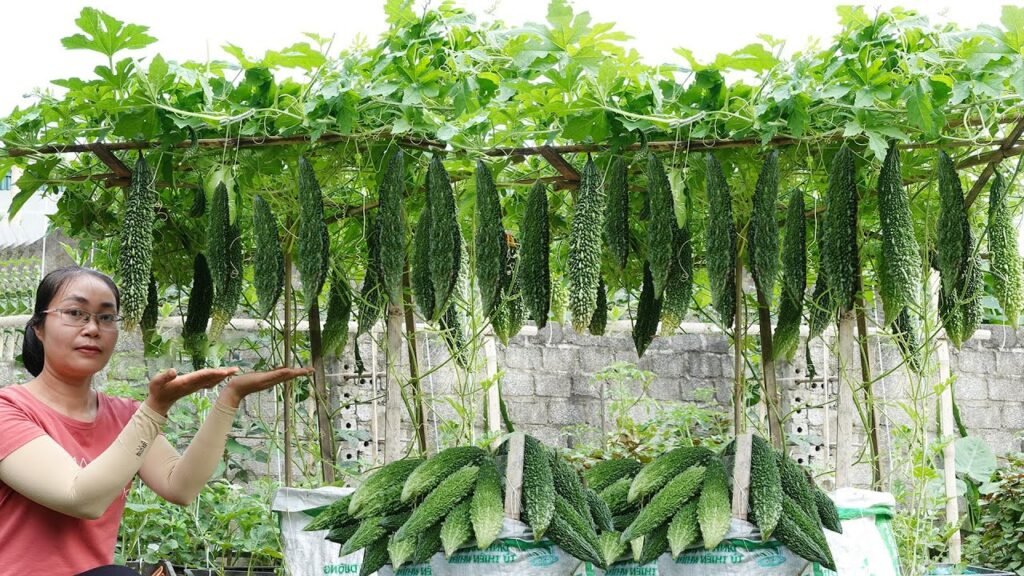
Using Waste to Grow Bitter Melon: Why It Works
Bitter melon thrives in nutrient-rich soil. Using organic waste from your kitchen—like vegetable peels, fruit scraps, coffee grounds, and eggshells—creates a natural, nutrient-dense environment for your plants.
Benefits of using waste:
- Improves soil fertility naturally
- Reduces the need for chemical fertilizers
- Increases soil moisture retention
- Encourages healthy root development
- Minimizes household waste
By converting waste into a productive growing medium, you create a sustainable system that nurtures your plants while helping the environment.
Materials You Will Need
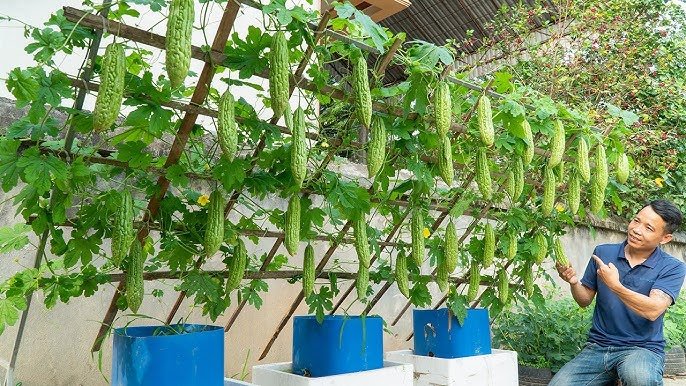
Before starting, gather these essential items:
- Bitter melon seeds or seedlings
- Kitchen waste (vegetable and fruit scraps, coffee grounds, eggshells)
- Garden soil or compost
- Large pots, containers, or raised beds
- Trellis or vertical support
- Watering can
- Mulch (optional, for moisture retention)
Step 1: Choosing the Right Bitter Melon Variety
Selecting the right variety is crucial for maximum productivity:
- Punjab Karela: High-yielding, disease-resistant, and produces medium-sized fruits.
- Chinese Long Bitter Melon: Long, smooth fruits; suitable for vertical growth.
- Local Dwarf Varieties: Ideal for container gardening or limited spaces.
Choose a variety suited to your climate, space, and desired fruit size. A well-chosen variety ensures faster growth and higher productivity.
Step 2: Preparing the Growing Medium Using Waste
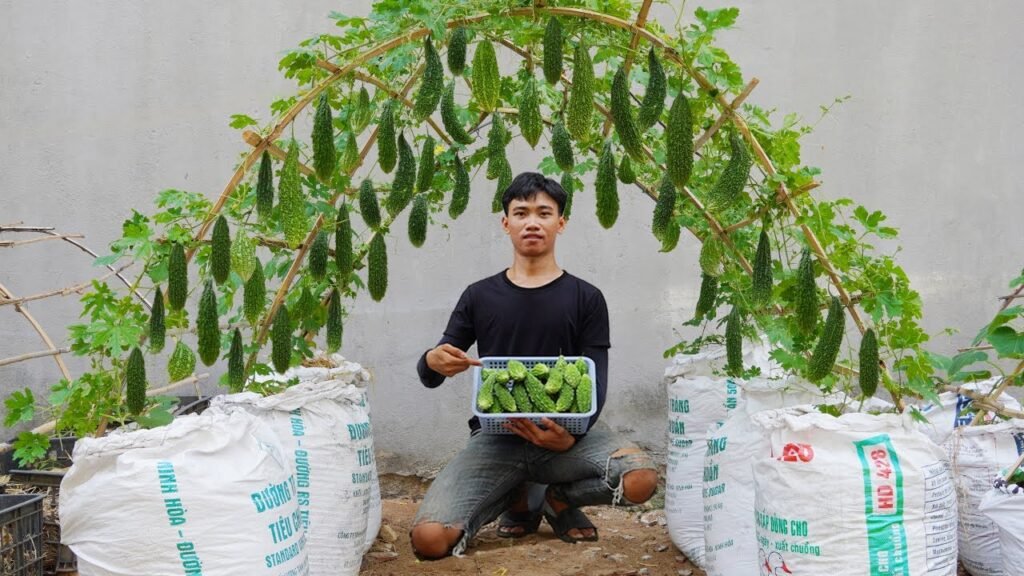
- Collect Kitchen Waste: Gather fresh vegetable and fruit scraps, coffee grounds, and crushed eggshells. Avoid spoiled or moldy materials.
- Optional Composting: For best results, compost the waste for 2-3 weeks to create a nutrient-rich mixture.
- Mix with Soil: Combine composted or fresh waste with garden soil at a 1:1 ratio to provide both nutrients and structure.
- Fill Containers: Fill your pot, container, or raised bed with the mixture, leaving 2-3 inches from the top for watering.
Tip: Adding coco peat or perlite improves aeration and drainage, preventing waterlogging and root rot.
Step 3: Planting Bitter Melon Seeds or Seedlings
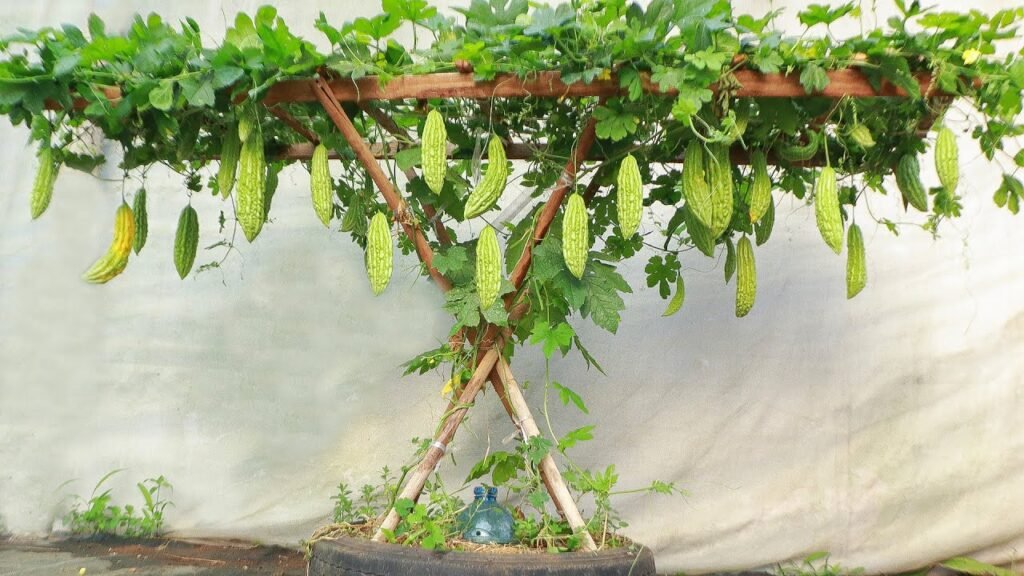
Bitter melon prefers warm conditions and fertile soil. Plant seeds when the soil is warm and frost risk is minimal:
- Seeds: Plant 2-3 seeds per container, about 1 inch deep. Keep soil moist but not waterlogged.
- Seedlings: Carefully transplant seedlings into the prepared medium, avoiding root damage.
Spacing: Maintain at least 2 feet between containers to allow adequate sunlight and airflow.
Step 4: Setting Up a Trellis or Vertical Support
Bitter melon is a climbing vine and requires vertical support for optimal growth and fruit production:
- Use bamboo poles, stakes, or wire mesh as a trellis.
- Position the trellis near your container or raised bed.
- Gently tie vines to the support using soft string or plant ties.
- Train vines to climb the trellis as they grow.
Benefits of vertical growth:
- Keeps fruits off the soil, preventing rot and pests
- Improves air circulation and reduces fungal infections
- Maximizes space efficiency, particularly for small gardens
Step 5: Watering and Fertilizing
Consistent watering is key to high productivity:
- Watering: Keep soil consistently moist, especially during flowering and fruiting. Avoid overwatering.
- Fertilizing: Kitchen waste provides nutrients naturally, but you can supplement with compost tea or organic fertilizer every 2-3 weeks.
- Mulching: Apply straw, dry leaves, or other organic mulch around the base to retain moisture and control weeds.
Proper watering and fertilization ensure vigorous growth, larger fruits, and prolonged harvesting.
Step 6: Pruning and Vine Management
Pruning is essential to maximize productivity:
- Remove yellow, damaged, or diseased leaves regularly.
- Trim lateral shoots that don’t bear fruits to direct energy toward main vines.
- Limit each vine to 4-6 fruits to increase fruit size.
Strategic pruning improves sunlight penetration and airflow, ensuring healthy plants and better yields.
Step 7: Pollination for Maximum Fruit Set
Bitter melon flowers are unisexual, meaning male and female flowers appear separately. Pollination is crucial for fruit development:
- Natural Pollinators: Bees and other insects usually pollinate the flowers. Plant companion flowers to attract pollinators.
- Manual Pollination: If natural pollinators are scarce, use a small brush to transfer pollen from male to female flowers.
Proper pollination ensures better fruit set, higher yield, and more uniform fruits.
Step 8: Pest and Disease Management
Common pests include aphids, whiteflies, and fruit flies, while fungal diseases such as powdery mildew can also affect plants.
Organic control methods:
- Neem oil or insecticidal soap for pests
- Remove infected leaves immediately
- Ensure proper spacing and airflow to reduce fungal infections
- Avoid overwatering to prevent root rot
Regular monitoring and early intervention are key to maintaining healthy, productive plants.
Step 9: Harvesting Bitter Melon
Timing is crucial for harvesting bitter melon:
- Fruits are typically ready 50-60 days after planting.
- Harvest when the gourd is firm, dark green, and has reached the expected size.
- Use a sharp knife or scissors to cut the fruit, leaving a small portion of the stem attached.
Tip: Frequent harvesting encourages the plant to produce more fruits throughout the season.
Step 10: Tips for Maximizing Productivity
- Use Vertical Space: Bitter melon climbs well, and vertical growth increases fruit production.
- Maintain Soil Health: Continuously add kitchen waste or compost to replenish nutrients.
- Consistent Watering: Avoid dry spells, especially during flowering and fruiting.
- Prune Strategically: Focus energy on main vines and fruit-bearing shoots.
- Pollination: Ensure effective pollination for maximum fruit set.
Implementing these strategies will help you grow bigger, healthier, and more abundant bitter melon fruits.
Conclusion
Growing bitter melon at home using kitchen waste is a cost-effective, eco-friendly, and highly productive method. By recycling household scraps into a nutrient-rich growing medium, providing proper trellis support, practicing consistent care, and managing pests naturally, you can enjoy a bountiful harvest of fresh, healthy bitter melons.
This method not only reduces waste but also provides a sustainable solution for urban gardening or small-space cultivation. With patience, consistent care, and the proper techniques, you can transform ordinary household waste into a thriving, productive garden full of nutritious bitter melon fruits.
Homegrown bitter melon not only promotes health but also offers the satisfaction of nurturing plants from waste into fruitful harvests. It’s a perfect example of sustainable, productive, and rewarding gardening.
